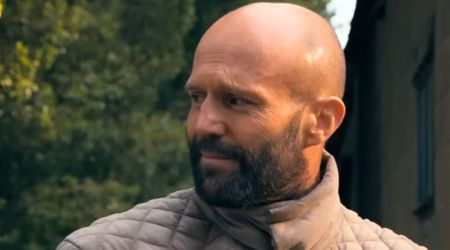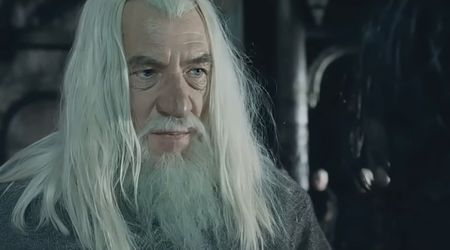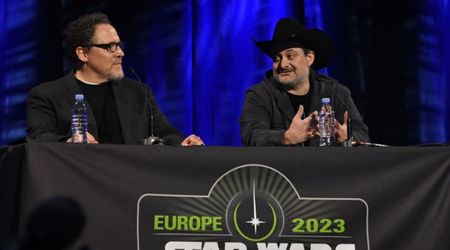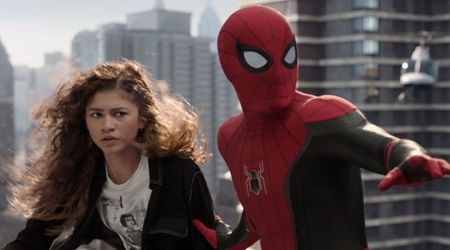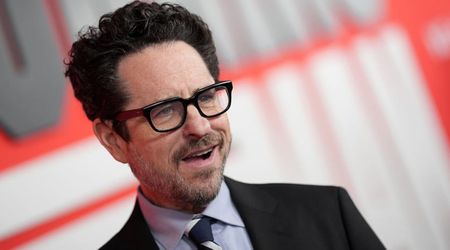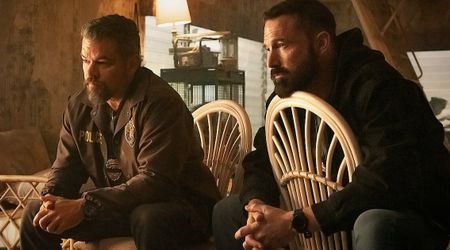'Three Identical Strangers': True story of the triplets separated at birth for a controversial study

The story of triplets Bobby Shafran, Eddy Galland, and David Kellman is one that became quite infamous in the 80s across the United States, despite the distinct absence of the internet that, these days, propagates even your 10-second cat video to the far reaches of the country and the globe. That alone should serve as a testament to how mind-bending their eventual reuniting was — separated at birth, nothing but sheer luck would see them cross each other's paths once again over 19 years later.
Filmmaker Tim Wardle was brought to the attention of the tale by a producer at Raw, the London-based production company where he works, and he decided it was worth turning into a documentary, and 'Three Identical Strangers' was thus born. Crafted with an immaculate eye for detail, a keen focus on the human emotion, and with a running theme that questions the nature of human existence, it raises some unsettling questions on the age-old nature vs nurture debate and humanity's peculiar obsession with twins and triplets.
But 'Three Identical Twins' has a surprise in store for viewers as well. It begins off pleasantly enough, with the heartwarming reunion of the long-lost brothers and their all-too-sudden rise to prominence, but then takes a turn for the dark and the ominous, threatening to dislodge long-held beliefs. Wardle explores the secret psychological experiments responsible for the triplets' separation, the cover-ups involved, and the stigma surrounding mental illnesses that leaves you with more questions than answers, and which earned him quite a few plaudits when his project aired at the Sundance Film Festival in January.
The events that would trigger the triplets' fortuitous reunion can be traced back to 1980 when a 19-year-old Bobby drove to his first day as a student at the Sullivan County Community College in Catskills, New York. On arrival, he noticed something strange: everyone seemed to be inexplicably chummy. As he walked by, many waved enthusiastically at him, some expressed they were so glad he was back, and girls even kissed him on the lips in delight. Bobby couldn't understand why any of this was happening because it was quite literally his first day at the college.
The pieces began falling into place when someone addressed him as Eddy. "Eddy's back! Everyone thought he wasn't going to come back!" he proclaimed. Michael Domnitz, another student at the college and Eddy's Galland's best friend, solved the perplexing mystery by asking Bobby a few simple questions. Was he adopted? Was his date of birth July 12, 1961? When he answered both with a definitive yes, it emerged that he was, in fact, a seemingly long-lost twin of Eddy.
Their reunion was celebrated by the local papers, and soon, details began to surface on how, despite their separation, they were startlingly similar to one another — both sported eye-to-eye smiles, had broad shoulders, massive hands, and that distinctive curly mop of hair. The similarities beyond just physical appearance as well. Their laughs were eerily alike, they had the same IQ of 148, and they both apparently lost their virginity when they were 12-years-old.
As the moving human interest story spread to New York City, it caught the attention of David Kellman, who, much to his bewilderment, realized he looked just like these 'twins' as well. He subsequently called up the Gallands, "You're not going to believe this...," he said, telling Eddy's mother that he might be their third long-lost brother. On hearing the news, she reportedly exclaimed, "Oh my god, they're coming out of the woodwork!"
A reunion of twins was a big enough deal for the papers, and with David's addition to the mix, they had a field day. The fact that their stories and quirky mannerisms aligned so perfectly, despite them having never known each other to that point in their life, was the proverbial icing on the cake for the frenzied media, who could not get enough of them.
All three were adopted from the Louise Wise Adoption Agency in New York City by a Jewish family; they all loved Italian food, despite their staunch Jewish upbringing; they smoked the same brand of cigarettes; they all shared an attraction towards older women; they were all regulars on the club scene and each had an adopted sister of the same age! Their very existence seemed to condemn the nature vs nurture debate into irrelevancy. It was too far-fetched to jot all the parallelisms to dumb coincidence.
Soon, they were making appearances on some of the country's top talk shows to voice their story. They went on 'Good Morning America,' 'Today,' and 'The Phil Donahue Show,' charming audiences with their natural wit and charisma. Their fame also saw them make a cameo appearance in Madonna's movie, 'Desperately Seeking Susan,' and the sitcom 'Cheers.'
The three became inseparable. They soon moved in together, enrolled in the same college, and earned degrees in international marketing. In their mid-20s, they cashed in on their status by even opening a steakhouse in Soho, New York, called 'Triplets,' which attracted its fair share of customers intrigued at the possibility of meeting the triplets.
They were having the time of their lives. That is, until their relationship eventually began to sour due to unseen pressures. Bobby was the first to decide to carve his own path, quitting the restaurant to pursue a career in law. Tragedy struck in 1995 when Eddy, who suffered from manic depression, committed suicide at his home in New Jersey, in the process, leaving behind a wife and a young child.
But as the hullabaloo surrounding the triplets began to die down, questions were asked of how their separation came to be in the first place. Two months after Eddy's death, it was discovered by New Yorker reporter Lawrence Wright that the Louise Wise Adoption Agency was complicit in a secret long-term study started in the 60s by psychoanalyst Dr. Peter Naubauer where newborn identical siblings put up for adoption were separated and given to different parents for the purpose of psychological and behavioral experimentation.
The triplets had thus been adopted by three different sets of parents, none of whom knew about the existence of the other two children. They were falsely informed that the children would be monitored for a study exploring the development of adopted children, with Claire Kellman, Eddy's mother, corroborating the fact. However, in reality, it was to determine how much of a person's behavior is hereditary, and how much down to environmental factors by using identical siblings raised in different households as the control group.
A psychologist was a regular visitor at all three homes and would test the boys and film them. These would continue on a regular basis with gaps of a few months until the boys turned about 12 or 13-years-old. All three had varying degrees of behavioral issues beginning as babies when they apparently would bend their heads on the side of their cribs for no reason.
Bobby carried these problems into his teens. He was an accomplice in a robbery gone wrong where an 83-year-old woman was beaten to death with a crowbar. He pleaded guilty to the crime and in exchange for testifying against his partner, was convicted of just manslaughter. He was given a relatively light sentence for the crime as well — five years of working weekends at a home for disabled children.
Those three were not the only ones separated at birth, however. Because the results of the now oft-criticized study were never published, it is unclear exactly how many unwilling participants are now spending their lives in ignorance of the existence of an identical brother or a sister. An estimate suggests that 13 children were involved, with three sets of twins and one set of triplets having found one another since.
In 1997, both Bobby and David expressed their melancholy at having had the opportunity to know each other for just 15 years during an interview with Newsday. Bobby said: "We were robbed of 20 years together," with David similarly adding: "How can you do this with little children? How can you do this to a little baby – innocent children being torn apart at birth?"
Neubauer defended it by claiming that the triplets would have been separated anyway as it was the adoption agency's policy at the time to do so. He said: "When we learned about the policy, we decided it gives one an extraordinary opportunity for research."

Another such story came to light in 2004 when Elyse Schein and Paula Bernstein met one another for the first time, at the age of 35. They were adopted by different families, who were not told of the other's existence after they were put up for adoption by their mentally ill mother. They went on to co-author a memoir, 'Identical Strangers: A Memoir of Twins Separated and Reunited,' on their ordeal.
In their case, it was renowned New York City psychologist Viola Bernard who was responsible. She had persuaded Louise Wise Services to send the twins to different homes and secretly followed their progress. But by the time Elyse and Viola began to investigate their adoption, Bernard had already passed away.
It's unnecessarily cruel then, that all the heartache and distress they, as well as the triplets, have had to endure, seem to have been for nothing. The study was never completed and remains unpublished, with the state of New York ending the practice of separating twins at birth in 1980.
That was thanks, in part, to Neubauer, who apparently aware that public opinion would not paint him and Bernard in a kind light if ever the experiment became common knowledge, had Yale University lock away and seal the study until 2066. Efforts to have the records released have failed, with the 10,000-odd pages that have been made public heavily redacted and censored.
A statement from the Jewish Board of Family and Children's Services — where Neubauer served as director of what was previously the Child Development Center for years — distanced itself from the study and read: "The Jewish Board does not endorse the study undertaken by Dr. Peter Neubauer, and is appreciative that the film has created an opportunity for a public discourse about it. The Jewish Board had no role in the separation of twins adopted through Louise Wise."
Wardle's documentary on the triplets and the study premiered in theatres in the U.S on June 29.

